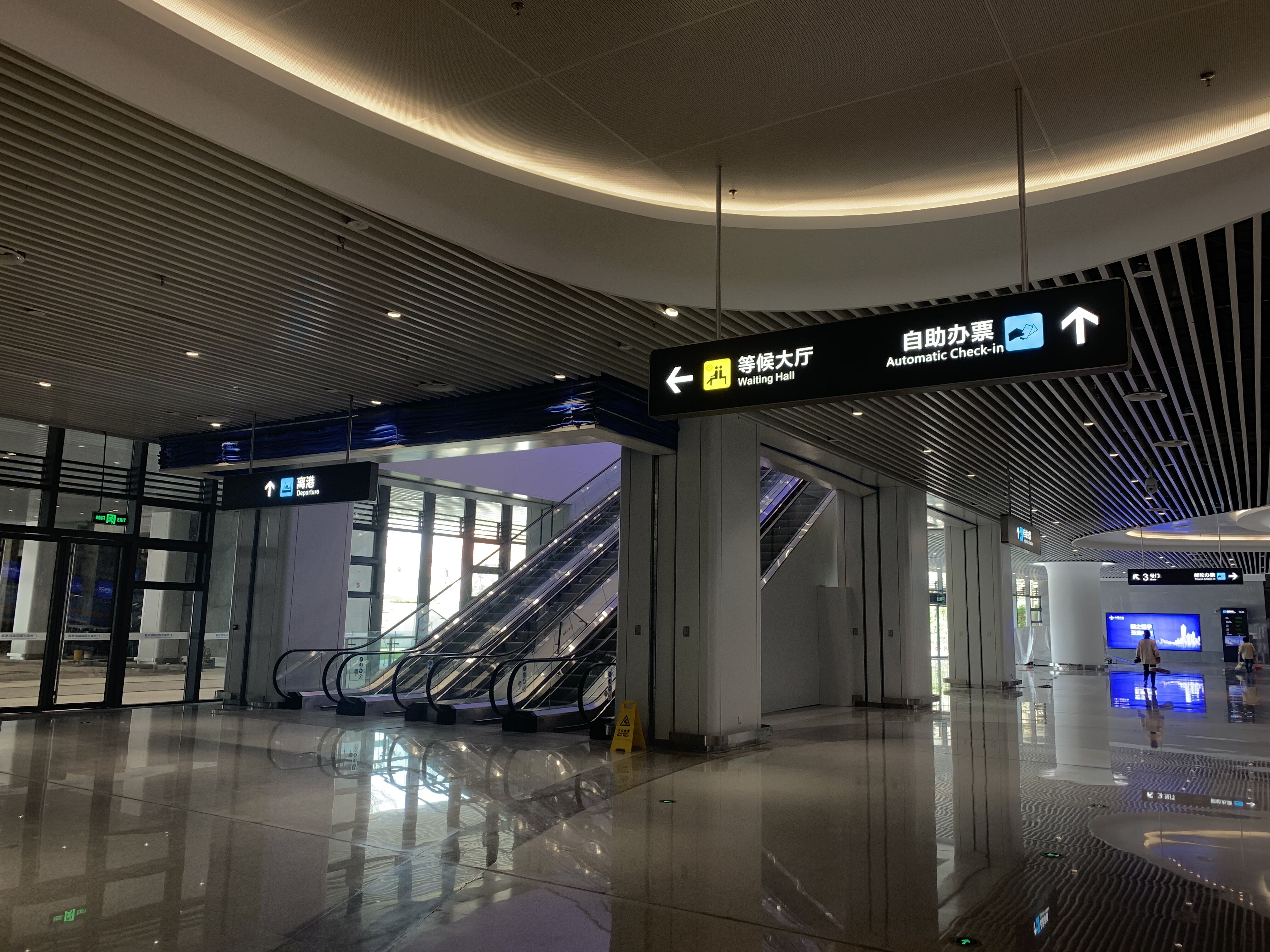ယနေ့ခေတ် အမြန်ပိုင်းများနှင့် အရှုံးအမြင်တွင် အခြေခံသူများအား လွယ်ကူစွာ ခြောက်ခြင်းနှင့် လွယ်ကူစွာ ခြောက်ခြင်းကို အကောင်းဆုံးသော အကြောင်းအရာဖြစ်ပါသည်။ အိမ်ကြီးဆိုင်များ၊ ပညာသင်တန်းများ သို့မဟုတ် ပြည်သူများအတွက် ဖွင့်လှစ်ထားသော အခြေခံများတွင် ကောင်းမွန်သော လမ်းညွှန်ရေးထုတ်ကြောင်းများသည် အားလုံးတွင် အဓိကအခန်းကဏ္ဍတစ်ခုဖြစ်ပါသည်။ အဲဒီမှာကို လူတွေအား ရှုံးမှုများကို လွယ်ကူစွာ ဖြေရှင်းပေးပြီး ရှုံးမှုများကို လွယ်ကူစွာ ဖြေရှင်းပေးပြီး သူတို့၏ ရှိနေသော ရာခိုင်နှုန်းများသို့ ရောက်ရှိရန် အခြေခံသူများ၏ အရည်အချင်းများကို လွယ်ကူစွာ ဖြေရှင်းပေးပါသည်။ ဒီဆောင်းပါးမှာ လမ်းညွှန်ရေးထုတ်ကြောင်း၏ အရေးကြီးမှု၊ ရှိနေသော အမျိုးအစားများနှင့် အခြေခံသူများ၏ အယူဝါဒကို ပိုမိုဆွဲဆောင်ရန် အကြောင်းအရာများကို ရှာဖွေပါမည်။ း
လမ်းညွှန်ရေးထုတ်ကြောင်း၏ အရေးကြီးမှု း
လမ်းညှိခြင်းအတွက် ထုတ်လွှတ်သော လက္ခဏာများသည် သြယ်လမ်းများနှင့် ပုံရိပ်များထက် ပို၍ အရေးပါသည်။ ဒါဟာ လမ်းညှိခြင်းကို ပေးသော မည်သည့်မျှဝေခြင်းဖြစ်စေ၊ သို့မဟုတ် စာသားဖြစ်စေ အဲဒီအရာတွေကို ပါဝင်သည်။ ဆေးရုံများ၊ လေဆိပ်များ၊ ရုံးကြီးများနှင့် မြို့၏ ပြောင်းလဲခြင်းများတွင် ကူးသန်းသော လက္ခဏာစနစ်များသည် အခြေခံအရာဖြစ်ပြီး လူများ၏ အကောင်းဆုံး အတွေ့အကြုံကို ပေးသည်။ ကြီးမားသော ဆေးရုံရှုံးမှုတွင် ပုဂ္ဂိုလ်များနှင့် သူတို့၏ မိသားစုများသည် မျက်နှာပြင်ပုံများကြောင့် အငြင်းပွားမှုအောက်တွင် များသည်။ သြင်းလွယ်ကူလှသော လမ်းညှိခြင်းလက္ခဏာများသည် ကြီးမားသော ကျွန်းကို ပေးနိုင်သည်။ ဘော်တီးများ၊ စောင့်မှုနေရာများ၊ အဆိပ်များနှင့် ထွက်ရောက်မှုများ၏ နေရာကို သြင်းလွယ်ကူစွာ ပြသထားသော လက္ခဏာများသည် အငြင်းပွားမှုကို လျော့နည်းစေပြီး လူများအား လွှမ်းမိုးမှုများကို ရှာဖွေရောက်ပြီး အဓိပ္ပါယ်များကို ရှာဖွေရောက်နိုင်စေသည်။ လမ်းညှိခြင်းလက္ခဏာများသည် အချဉ်ကြီးကျယ်စွာ အချက်အလက်များကို ပြသထားပြီး အရာရှိမှုနှင့် အဆုံးမှုကို လျော့နည်းစေပြီး လူများအား အကောင်းဆုံးအကြောင်းကို ပေးသည်။ း
တိုက်ရိုက်သော လက္ခဏာဒီဇိုင်း၏ အခြေခံအရာများ း
အောင်မြင်သော လမ်းညွှန်ရေးဆိုင်ရာ ထုတ်ကုန်စီမံခန်း၏ အချက်အခြားအတွင်းမှာ တော်တော်မြောက်သော ဒီဇိုင်းဖြစ်ပါသည်။ ကောင်းသော လက်မှတ်တွင် လူမှုဝင်ရောက်သူများ၏ မျက်စိကို ယူဆောင်ရန် မျှော်လင့်သော အချက်များရှိရပြီး၊ ဖတ်ရှုနှင့် နားလည်ရေးအတွက် လွယ်ကူသည်။ ကမ္ဘာ့ဆိုင်ရာ သင်္ကေတများကို အသုံးပြုခြင်းသည် ဘာသာစကားအကျဉ်းချုပ်များကို ကျော်လွှားသည်။ ဥပမာအားဖြင့်၊ ကမ္ဘာ့ဆိုင်ရာ လှိုင်းခြောက်သင်္ကေတသည် ဝင်ရောက်နိုင်သော ဒေသကို ညွှန်ပြသည်ဟု အလားတူ အလဲလဲ လိုက်သည်။ ရှင်းလင်းသော၊ ဖတ်ရှုနိုင်သော အက္ခရာများကို ရွေးချယ်ရမည်၊ အကွာအဝေးမှ ဖတ်ရှုနိုင်စေရန် အကောင်းဆုံး အရွယ်အစားကို သိမ်းဆည်းရမည်။ ရောင်သည်လည်း အရေးကြီးသည်။ ပိုင်းခြားရောင်များသည် ပိုင်းခြားရောင်များထက် ထိုးထားသော အကြောင်းအရာများထက် ပို၍ သတ်မှတ်ရေးသားသည်။ း
အချိန်တူတက်ရောက်မှုလည်း အရေးပါသည်။ ထုတ်ကုန်များသည် အရေးကြီးသော ဆုံ့ရှိုင်းများတွင် စီးရီးရှိ ဖြတ်သိမ်းထားသင်္ကေတများအဖြစ် ထိန်းသိမ်းထားရမည်ဖြစ်သည်၊ ဥပမာအားဖြင့် လမ်းတွေနဲ့ ဝင်တွက်များ၊ ထွက်မှုများတွင် စီးရီးရှိ ဖြတ်သိမ်းထားသင်္ကေတများအဖြစ် ထိန်းသိမ်းထားရမည်ဖြစ်သည်။ ဥပမာအားဖြင့် ရုံးတွင် ဝယ်ယူသူများကို အကောင်အထည်ဖော်ပေးနိုင်သည့် ထုတ်ကုန်များကို ရုံး၏ အချိုးအစားများ၏ ဝင်တွက်များ၊ အလှည့်လှည့်မှုများ၏ အနီးချင်းများ၊ လမ်းကြောင်းများ၏ အဆုံးတွင် ထိန်းသိမ်းထားရမည်ဖြစ်သည်။ သူငယ်တွေဟာ ရွေးချယ်မှုများကို လုပ်မယ်ဆိုတာကို အကြင်းကြင်းမှာ မြင်ရမယ်ဆိုတာကို အားလုံးကို အကောင်အထည်ဖော်ပေးနိုင်သည်။ ဒါက မှားယွင်းမှုများကို လုပ်ငန်းများနှင့် ပြောင်းလဲမှုများကို အကောင်အထည်ဖော်ပေးနိုင်သည်။ း
လမ်းညွှန်ခြင်းတွင် ပညာရေးဆိုင်ရာ အগုတ်လှုပ်ရှားမှုများ း
နည်းပညာအသစ်များ၏ ပေါ်ပေါက်လာမှုက လမ်းညွှန်ပြသမှု အတွေ့အကြုံကို တီထွင်ဖန်တီးပေးခဲ့သည်။ ဒစ်ဂျစ်တယ် ဘုတ်ပြားများနှင့် တိုက်ရိုက်ထိတွေ့၍ အသုံးပြုနိုင်သော စကရင်များသည် ယခုအများဆိုင်းရာတွင် ပြင်ပနေရာများတွင် တစ်ပြိုင်နက် တည်ရှိနေပါသည်။ ဤဒစ်ဂျစ်တယ် ပလက်ဖောင်းများသည် စတိုးဆိုင်များတွင် အချိန်ပြင်ဆင်ထားသော အချိန်ဇယား၊ လေဆိပ်တွင် လေယာဉ်များ နှောင့်နှေးမှုများ သို့မဟုတ် ပြတိုက်တွင် အနီးစပ်ဆုံး ဖော်ပြထားသော နေရာကို ပြသနိုင်သည်။ ထို့ပြင် ၎င်းတို့သည် တစ်ဦးချင်း၏ စတင်သောနေရာနှင့် သွားရောက်မည့်နေရာအခြေခံ၍ လမ်းညွှန်များကို ပေးဆောင်နိုင်သည်။ း
ဥပမာအားဖြင့်၊ ကြီးမားသော ကွန်ဗင်ရှင်စင်တာတွင်၊ သူငယ်ချင်းသည် သူ့၏ ရှိနေသော ဘိုးနံပါတ်ကို ထိပ်ဆိုင်ခြင်း-စီးရီးကီယာတွင် ထည့်သွင်းနိုင်ပြီး၊ စနစ်သည် အဆင့်-အဆင့်လမ်းညွှန်မှုကို ဖန်တီးပေးနိုင်ပြီး လုပ်ဆောင်နေသော အချိန်များသို့မဟုတ် ပိတ်ဆိုးထားသောလမ်းများကို ထည့်သွင်းပေးနိုင်သည်။ ဤပညာရေးကို လမ်းညွှန်ဆိုင်ရာ လက်မှတ်များတွင် ပေါင်းစပ်ခြင်းဖြင့်၊ အဖွဲ့အစည်းများသည် အပြောင်းအလဲမှုမှာ မြင်ရသော မြေပုံကို ဆက်သွယ်လုပ်ငန်းမှုအကြောင်းအရာသို့ ပြောင်းလဲနိုင်ပြီး၊ သူငယ်ချင်း၏ အတွေ့အကြုံကို ပိုမိုကောင်းမွန်စေပြီး လမ်းညွှန်မှုကို ပိုမိုကောင်းမွန်စွာ ပိုင်းဝေနိုင်သည်။ း
မှာတ်ကိုင်မှုအဖြစ် ထပ်တလဲလဲရှုပ်ထွေးခြင်း၏ အရေးကြီးချက် း
သင့်မှန်ပြခြင်း သို့မဟုတ် လက်ရှိထားသော လက္ခဏာများ ဘယ်အளာဖြစ်စေ အဆင်မပြေပါက ဒီဇိုင်းများ ဘယ်လောက်ကောင်းမွန်စေ၊ သည်များ၏ အကောင်းဆုံးသုံးစွဲမှုကို ဖြည့်စွက်ရန် အရေးကြီးပါသည်။ ပြစ်ဆိုင်းသော၊ ခြားထွက်သော သို့မဟုတ် ကျသွားသော လက္ခဏာများသည် ဝင်ရောက်သူများကို မျှော်လင့်စေပြီး လုပ်ငန်းစဉ်များကို ဖျက်သိမ်းနိုင်ပါသည်။ လမ်းညွှန်ခြင်း လက္ခဏာများကို စစ်ဆေးရန်၊ သန်းခိုင်းရန် နှင့် အသစ်ပြုပြင်ရန် မှန်ကန်သော အချိန်ကို ဖော်ပြခြင်းမှာ အရေးကြီးပါသည်။ း
ဒီစီးရွားများကို စစ်ဆေးရန်၊ ဒီဂျစ်တယ် လက္ခဏာများ၏ လင်းများအား လုပ်ဆောင်နိုင်ပါက၊ လိုအပ်သောအချိန်တွင် အချက်အလက်များကို ပြင်ဆင်ခြင်းကို ပါဝင်ရန် လိုအပ်ပါသည်။ ဥပမာအားဖြင့်၊ တက္ကသိုလ်ကင်ပြပ်တွင် အသစ်တည်ဆောက်ထားသော အဆောက်အအုံများသို့မဟုတ် အခန်းအမှတ်များကို ပြောင်းလဲလျှင်၊ လမ်းညွှန်ခြင်း လက္ခဏာများကို အမြန်ပြင်ဆင်ရန်လိုအပ်ပါသည်။ အဲဒီလို အကြံပြုထားသော အရေးကို မှားယွင်းမှုမရှိဘဲ လမ်းညွှန်ခြင်းကို ရှင်းလင်းစေပြီး၊ ဝင်ရောက်သူများအား သင့်မှတ်တမ်းများကို တန်ဖိုးပေးသည်ကို ပြသပြီး သို့မဟုတ် အကောင်းဆုံးအကြောင်းကို ဖြစ်စေရန် ကူညီပါသည်။ း
လမ်းညွှန်ခြင်း လက္ခဏာများ၏ အနာဂတ် း
အိုင်ဒัสတီ ထုတ်ကုန်များသည် လေ့လာရေး စနစ်များတွင် ပိုမိုအလွယ်တကူ ပြောင်းလဲနေသည့် ဆိုင်ရာ ပိုင်းခြား ပြောင်းလဲမှုများကို ပြသထားသည်။ ပိုမိုများစွာသော နေရာများတွင် ဒီဂျစ်တယ် လက်မှတ်များနှင့် အသုံးပြုသူများအတွက် လွယ်ကူစွာ ဖြင့် ဖြစ်ပေါ်လာသည့် မိုဘိုင်း အပ်ပလီကေးရှင်းများကို ထုတ်လုပ်လျှင်၊ လေ့လာရေးသည် ပိုမိုအလွယ်တကူ ကိုယ်စားပြုသော အတွေ့အကြုံများအဖြစ် ဖြစ်ပေါ်လာမည်ဖြစ်သည်။ ရာဇဝင်များသည် မိမိတို့၏ အမြင်အကြောင်းများအရ အတိုဆုံးလမ်းကြောင်း၊ အနည်းဆုံးအဆင့်များကို ဖြတ်သွားသည့်လမ်းကြောင်း၊ သို့မဟုတ် အထူးသော အရာများကို ဖြတ်သွားသည့်လမ်းကြောင်းများကို ရရှိနိုင်မည်ဖြစ်သည်။ း
အိုင်ဒီယာများကို ပိုမိုအလွယ်တကူ လေ့လာနေသော အဖွဲ့အစည်းများသည် ရာဇဝင်များ၏ ပြောင်းလဲသော စိတ်ကြိုက်များကို ပြည့်စုံစွာ လုံခြုံစွာ လိုက်နာနိုင်မည်ဖြစ်သည်။ နောက်ဆုံး ပြောင်းလဲမှုများနှင့် ဒီဇိုင်းများကို အသုံးပြု၍ သူတို့သည် ပိုမိုကိုယ်စားပြုသော လေ့လာရေးအတွေ့အကြုံများကို ဖန်တီးနိုင်ပြီး၊ ရာဇဝင်များအား ကောင်းမွန်စွာ လက်ခံခြင်း၊ သိရှိခြင်းနှင့် သူတို့၏ အားလုံးကို သိမ်းဆည်းနိုင်စွမ်းရှိစေရန် အကြံပြုပါသည်။ း
အပြီးစာတွင်၊ ကူညီရေးဆိုင်ရာလက္ခဏာများသည် သူငယ်ခန့်မှာယူသူများ၏ အperiencesရင်းအမြင်ကို ပိုမိုတိုးတက်စေရန်အတွက် အခြေခံဒေသဖြစ်သည်။ တိုင်းတာမှုရှိသော ဒီဇိုင်းသဘောတရားများကို ပေါင်းစပ်ခြင်း၊ တကန်သို့ ပြောင်းလဲမှုများကို လက်ခံခြင်း၊ နှင့် စီမံကိန်းထားသော မှားယွင်းမှုများကို လုပ်ဆောင်ခြင်းဖြင့် အဖွဲ့အစည်းများသည် ကြိုက်ချင်မှုနှင့် လမ်းညွှန်ရန် ပတ်ဝန်းကျင်ကို ဖန်တီးနိုင်ပါသည်။ လျင်မြန်စွာ လမ်းညွှန်ရေးဆိုင်ရာ စာရင်းများကို တိုးတက်လာသည့်အတိုင်း၊ ရှေ့ကြောင်းကြည့်သော အဖွဲ့အစည်းများအတွက် တိုက်ရိုက်လမ်းညွှန်ရေးအတွက် ပိုင်ဆိုင်ရာ အကျိုးအမြတ်များကို ရင်းနှီးချက်တစ်ခုအဖြစ် ရှိနေမည်ဖြစ်သည်။

